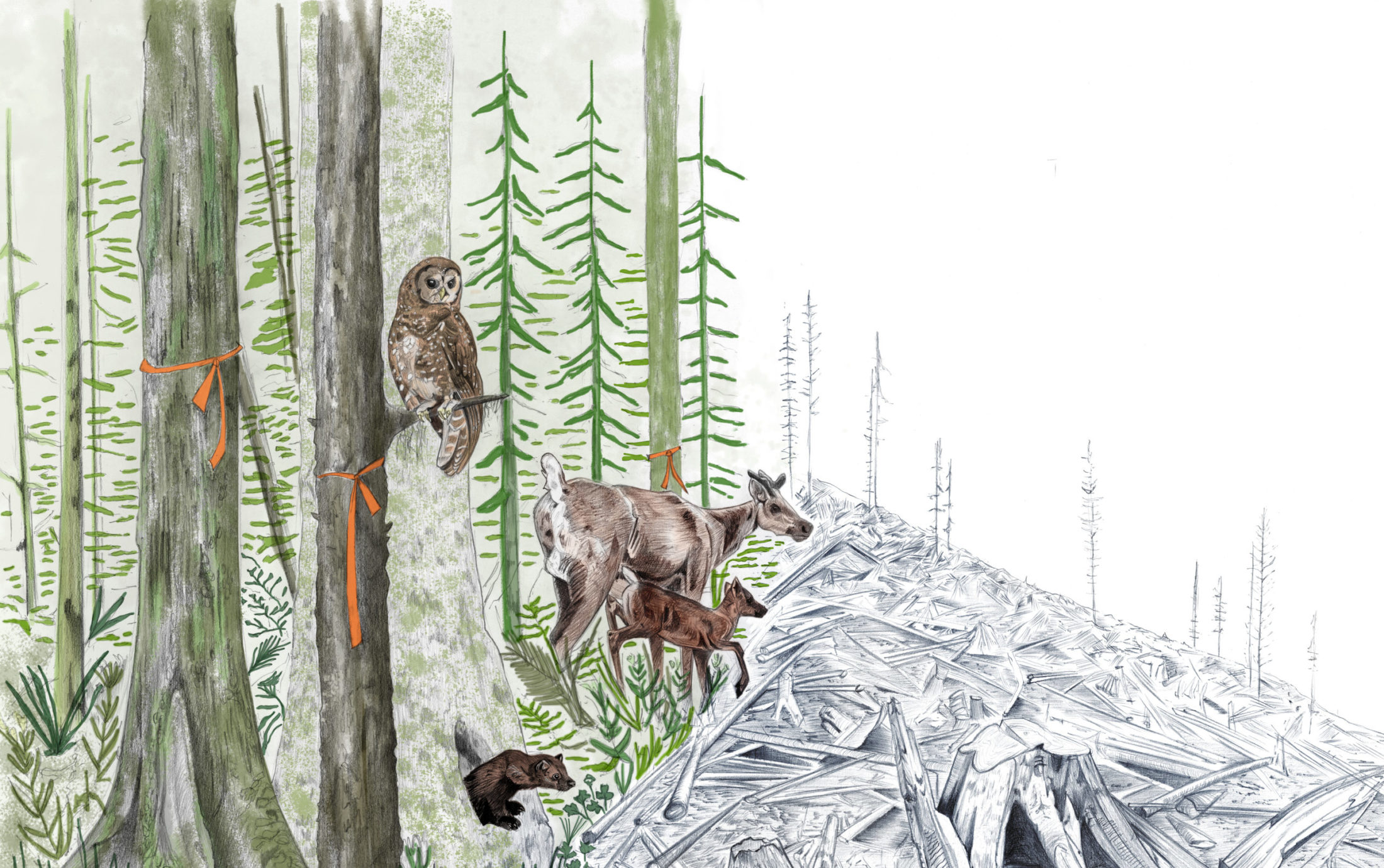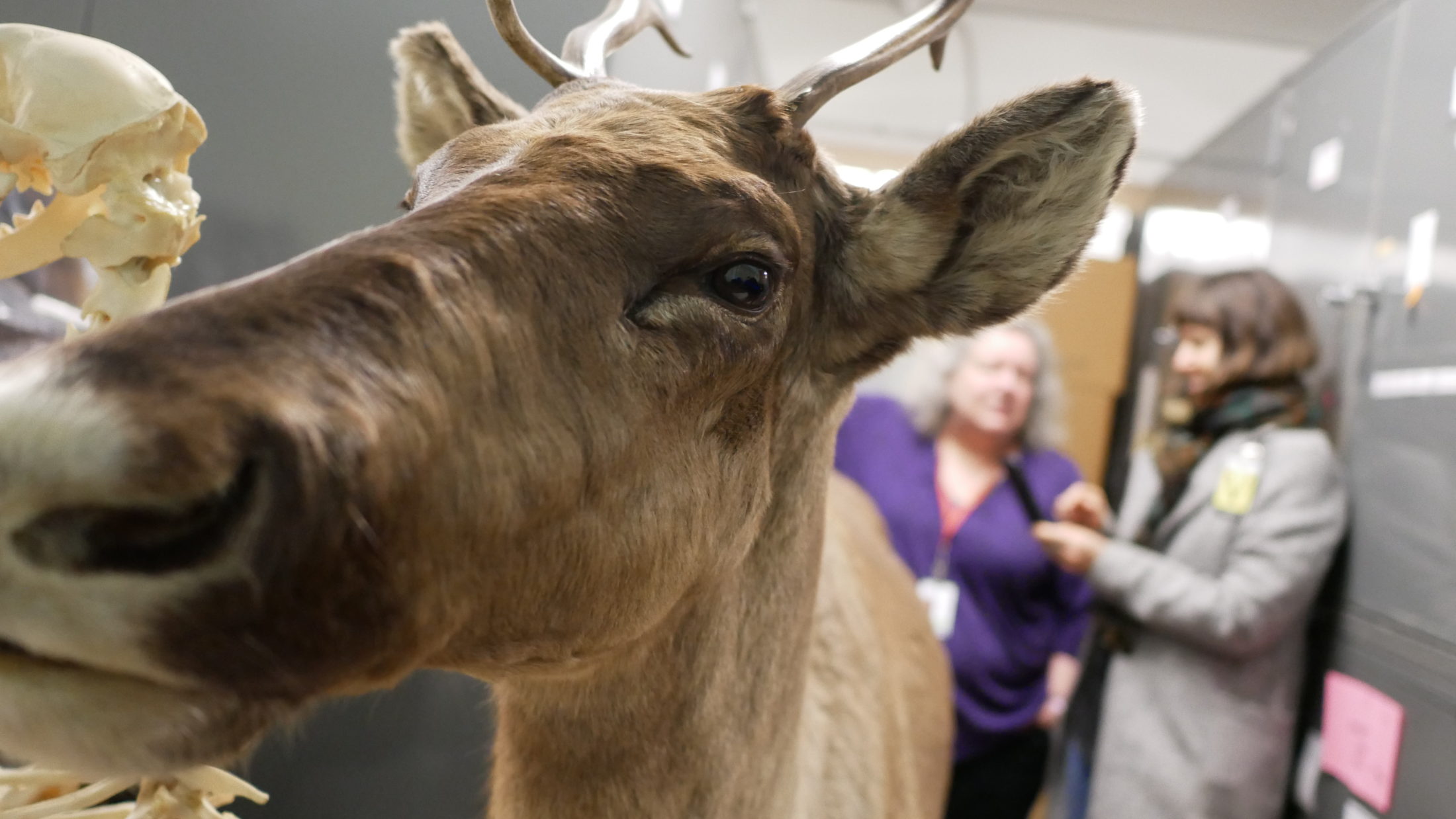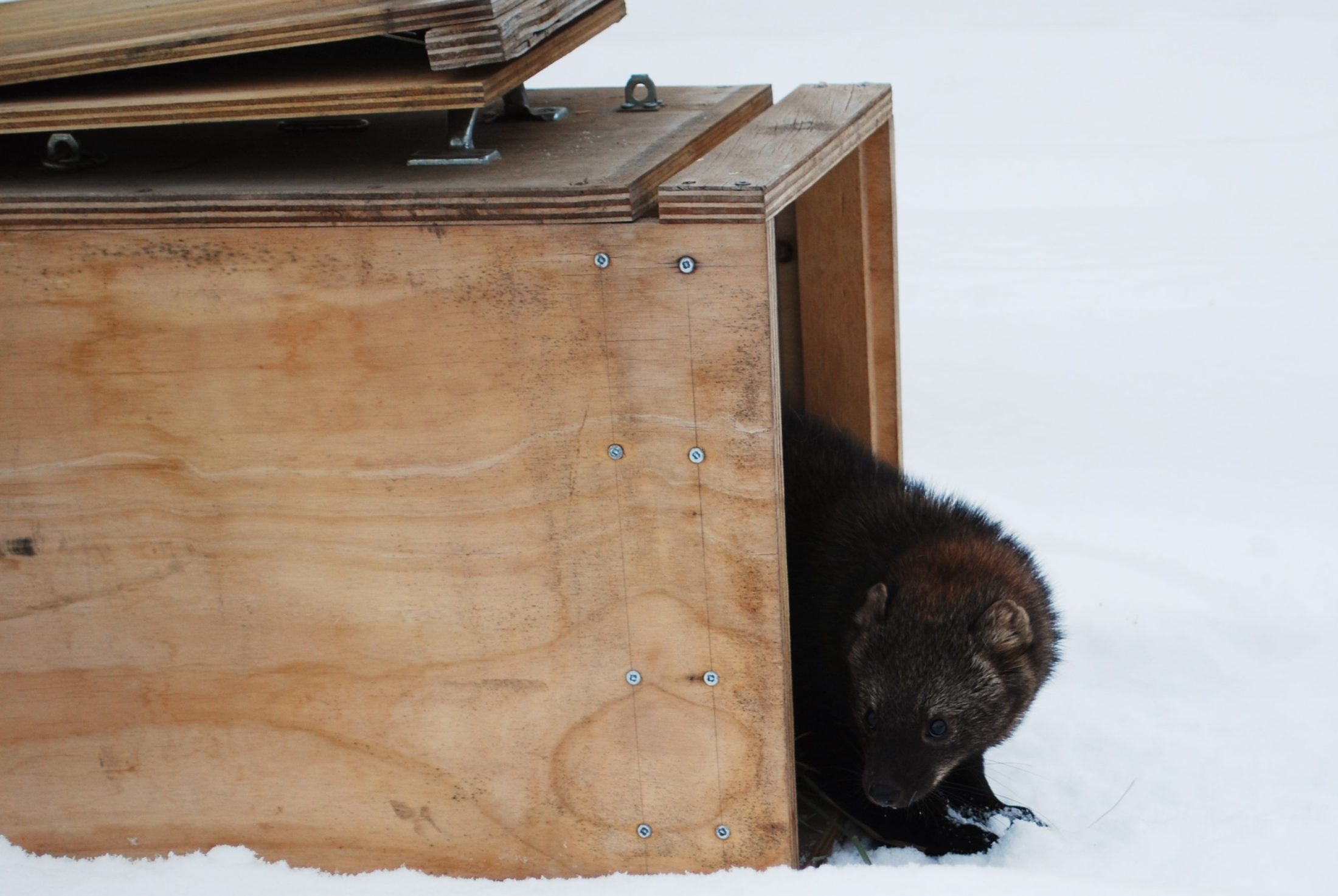
Rocky Mountain coal mine in Alberta takes next step to expansion
In Alberta, a massive open-pit coal mine near Jasper National Park is hoping to expand...
Nine months after listing the interior fisher population as endangered, the B.C. government has approved winter trapping of the elusive forest animal even though a scientist warns it could wipe out fishers in some areas.
“A red-listed population of this size, with a negative population growth rate … should not be trapped,” biologist Larry Davis, a member of the B.C. fisher working group, told The Narwhal.
“These animals are a low-density species. So many areas have been impacted by [forest] harvesting and fires that removing even a few more animals from these areas will probably result in local extirpations.”
B.C. has no endangered species legislation, allowing species at risk of extinction to be killed outside of protected areas. Out of
1,336 species at risk currently recognized by the province, only four are legally protected under B.C.’s Wildlife Act — the burrowing owl, American white pelican, Vancouver Island marmot and sea otter.
B.C.’s hunting and trapping regulations for 2020-2022, which came into effect on July 1, noted the interior fisher was red-listed earlier this year, meaning the genetically unique population is in danger of disappearing. The regulations said fisher trapping seasons were under review and could be amended prior to the start of trapping season on Nov. 1, but no changes have been made.
Fisher, which are about the size of a housecat but stretched out like a limo, require mature trees for denning and shelter. Only five species of tree in B.C. have cavities suitable for female fisher to birth and raise their kits while avoiding predators.
The interior fisher population has suffered steep declines, largely due to habitat destruction as a result of accelerated logging for the mountain pine beetle, which has eliminated fisher denning trees such as cottonwoods and balsam poplars.
Only 300 to 500 interior fishers remain, according to Davis.
“If an area’s already been impacted by extensive harvesting and wildfires, the remaining fisher population is likely to have a hard time sustaining itself — and even removing a few more individuals will make that more difficult,” he said.
The fisher trapping season coincides with a Nov. 16 letter sent to Premier John Horgan from 17 scientists, urging the newly elected NDP government to create “long overdue” endangered species legislation and to invest in protection and recovery efforts needed to reverse biodiversity loss across the province.
“Provincial leadership is sorely needed,” the scientists wrote. “With every passing year, it becomes more and more difficult to reverse species declines.”
B.C., the most biodiverse province in Canada, has the greatest number of species at risk of extinction, with 1,336 species on the red and blue lists. Another 1,037 species meet provincial status requirements for red and blue listings but have not yet been added.
Red and blue listing in B.C. is currently an empty exercise, however, because species at risk of extinction receive no unified legal protection in the province.
Unlike six other provinces that have endangered species legislation, B.C. relies on an uncoordinated mish-mash of legislation to protect plants and animals, including the Forests and Range Practices Act, the Oil and Gas Activities Act, the Environment and Land Use Act, and the Wildlife Act.
When the NDP came to power in 2017, Premier John Horgan instructed Environment Minister George Heyman to enact an endangered species law, in keeping with an election promise made by the party. But the government subsequently reneged on its commitment.
Tara Martin, one of the scientists who signed the letter to Horgan, said she and other scientists worked with the province and other stakeholders to advance the promised legislation.
“We were hugely disappointed that nothing came of it,” Martin said in an interview. “Essentially, the province walked away from their commitment, with no statement as to why.”

Southern mountain caribou, northern spotted owls and the interior fisher are only a few of the many hundreds of species at risk of extinction in B.C. Illustration: Sarah Hammond / The Narwhal
The push for B.C. endangered species legislation comes as scientists around the world warn we are witnessing the sixth mass extinction event in the planet’s four-billion-year history. Scientists estimate as many as half of all species may be headed toward extinction in the next 30 years, in large part due to habitat destruction.
Martin said species continue to be added to B.C.’s list of at-risk species and ecosystems.
“This is negligent. This is really unacceptable. We’re losing many opportunities that come with having a biodiverse region. We’re so fortunate to live where we do, and we are not heeding the responsibility that we have for protecting these species and ecosystems,” she said.
“We’re down to less than three per cent of our old-growth forests left. We’re seeing caribou herds disappear. We saw 19,000 cubic metres of endangered white bark pine harvested without penalty.”
Martin and the other scientists told Horgan that B.C.’s wildlife populations are decreasing in abundance, “with many species approaching extinction” due to unsustainable land use and development.
“We’re all losing,” Martin said. “We’re losing our life support system. We’re losing our natural heritage. We’re losing our economic opportunities. And we’re really impacting future generations by taking away opportunities, by not putting in legislation to safeguard our species and ecosystems.”

A taxidermied caribou cow from an extirpated herd in a back room of the Royal B.C. Museum. Caribou populations have been winking out of existence in B.C. due to over development, industrial logging, road building and other human incursions into wilderness. Photo: Carol Linnitt / The Narwhal
Failing to protect B.C.’s species and ecosystems also violates the rights of Indigenous peoples to have access to species for food, social and ceremonial purposes, the scientists said in their letter. “Not protecting biodiversity in the province is antithetical to the B.C. government’s commitments to reconciliation,” they stated.
Trapper Wayne Kirsh said he is frustrated by the B.C. government’s lack of action to protect fisher habitat. “I don’t think the trapping is going to hurt the fisher, compared to the loss of habitat,” said Kirsh, who trapped interior fisher for decades.
Kirsh and his wife Leilah stopped harvesting fisher on their trapline, in the Nazko region southwest of Prince George, as fisher disappeared following industrial logging. The couple tried, unsuccessfully, to persuade logging companies and the provincial government to leave behind denning and nesting trees.
“When you have a trapline it’s kind of like having a farm. You have to farm it because if you don’t, in a couple of years, you have nothing left to trap,” Kirsh said in an interview.
In 2016, the Kirshes filed a complaint with B.C.’s forest practices board, an independent watchdog for forestry practices, saying forestry companies were harvesting heavily on their traplines with no designated cutting areas.
The forest practices board upheld the complaint, saying the provincial government failed to use legal tools available to protect fisher habitat.
Kirsh, who worked in the forestry industry for 37 years, said logging practices in interior fisher habitat “haven’t changed one bit. They’re just going in there and raping the habitat.”
“Why don’t they leave some habitat? … It’s not the trapper who is screwing things up,” he said. “Fires are one thing, but logging is the number one killer. They’re not leaving their denning trees and they’re not leaving the spruce with the witch’s broom.”
Fisher use witch’s broom, a dense mass of shoots on a tree branch that resembles a nest, for resting sites and to shelter from the elements.
David said about 170 fishers are trapped each year in B.C., which has a second fisher population in the Peace region that is blue-listed, meaning it is vulnerable to local extinction.

The Kirshes’ stopped trapping fisher for fur in the Nazko in 2014, in a voluntary effort to help the struggling population. In 2015 and 2016, the couple live-trapped 19 fisher for a reintroduction project in Washington state’s Cascade Mountains. Photo: Leilah Kirsh
Biologist Eric Lofroth said it’s not typical for a red-listed species like the fisher to be harvested.
The impact will depend on where interior fishers are trapped, said Lofroth, adding that government-approved trapping “is certainly not going to be of any help” in recovering populations. “Whether it’s going to result in the extirpation of fisher from any particular part of its current distribution is hard to know.”
He said new data — that he and other scientists have collected — indicates the interior fisher population has a lower reproductive rate than the boreal fisher population in the Peace, possibly due to food availability. Fisher prey on shrews, mice, voles, snakes, squirrels, snowshoe hares and grouse. They also consume mushrooms and berries but not, despite their name, fish.
“The number of females that den on an annual basis and the average litter size is much lower in the central interior than it is in the boreal population,” Lofroth said, noting that a paper on the new data is awaiting peer-review. “That has a real bearing on potential population growth rates.”
The province’s new hunting and traplines guidelines regulations said there is “increased concern” for fisher populations in areas of the Thompson, Cariboo, Omineca and Skeena Regions that have experienced large habitat changes due to forest harvest and salvage of beetle and fire-killed forests.
“Where habitats are compromised, trapping poses a compounding threat to population persistence,” say the regulations, which encourage trappers to reduce the incidental capture of fisher by modifying marten boxes, which attract fisher.
Davis said he has spoken with a few trappers who are not planning to trap fisher this year due to low fur prices related to the COVID-19 pandemic. “That at least gives us a glimmer of hope that those populations of fishers won’t be heavily impacted with the trapping this winter.”
“There are areas out there that could be refugium for fishers, whereas in other areas trappers are still active.”
The fisher working group, supported by the B.C. government, has built close to 1,000 boxes to give out to trappers who harvest marten but who also catch fisher in their traps, Davis said.
“We are rolling that out right now, trying to get these boxes out to trappers, just to test them, to see if they’re comfortable using them.”
The boxes have an entry plate with a hole designed for the skull size of martens, which are smaller than fishers. “There’s a difference in the width of their head so they’ve designed the box to have a hole that would fit a large male marten but shouldn’t allow a female fisher to enter, and for sure a male fisher would not be able to enter,” Davis said.
In response to a forest practices board report based on the complaint from Wayne and Leilah Kirsh, the B.C. forests ministry said it would develop a provincial fisher management plan. In June, the ministry told The Narwhal the plan is underway, with a “targeted” completion date of 2022.
Endangered species legislation was not mentioned in the 2020 NDP election platform. Instead, the party vaguely pledged to “work with neighbouring jurisdictions to cooperatively develop and invest in new strategies aimed at better protecting our shared wildlife and habitat corridors.”
B.C. has no laws that specifically prohibit harm to species at risk (other than prohibitions around hunting) or laws that provide mandatory protection for the habitat that species vulnerable to extinction require for their survival and recovery. Nor do B.C. laws require recovery planning or implementation for species at risk.
The scientists are requesting a meeting with B.C.’s next environment minister, who will be named on Nov. 26 when the new provincial cabinet is announced, to discuss how the new government can safeguard endangered species and ecosystems.
“We feel that Horgan has a clear mandate to govern, and a responsibility to re-engage in this really important effort to bring about species at risk legislation for the province,” Martin said.
The B.C. government is not answering media questions during the interregnum period following the Oct. 24 election, unless questions pertain to health and safety or statutory requirements.
Get the inside scoop on The Narwhal’s environment and climate reporting by signing up for our free newsletter. A $335 million funding commitment to fund...
Continue reading
In Alberta, a massive open-pit coal mine near Jasper National Park is hoping to expand...

A trade war could help remake B.C.’s food system, but will family farmers be left...

First Nations are leading efforts to make sure lake sturgeon can find a home in...
